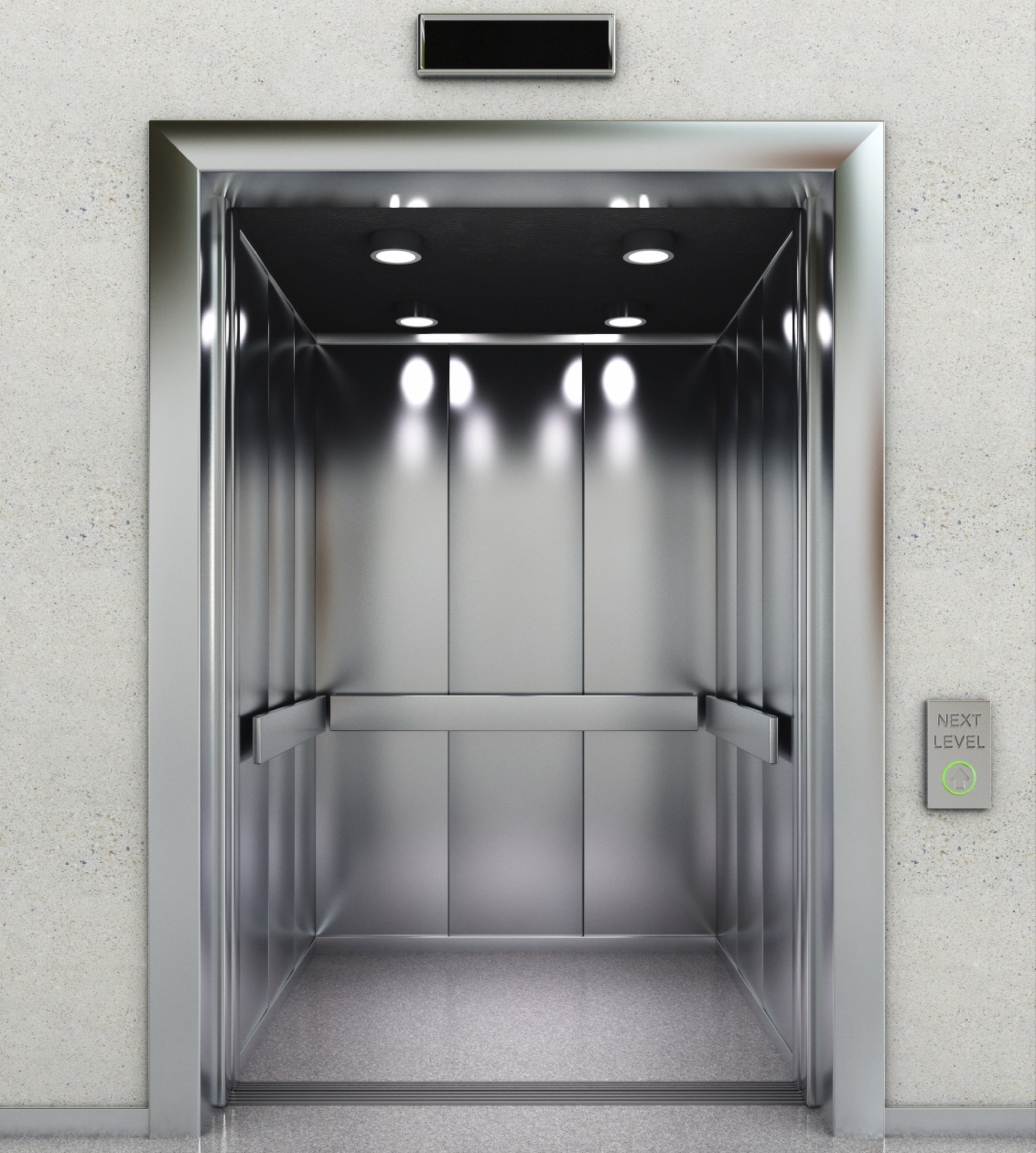Types of Lifts
Contents |
[edit] Introduction
Lifts and elevators have become an essential part of everyday life, particularly for those who work or live in high-rise buildings. There are many different types of lift which can be used in different applications, serving different purposes.
[edit] Platform lifts
Platform lifts can take a number of different forms, but due to their design they are limited to use in low-rise buildings where they will only travel a few floors at most. This means they tend to move more slowly than passenger lifts and are often used for disabled access in buildings where most people will take the stairs.
[edit] Passenger lifts
Passenger lifts are designed to carry people and can come in a variety of forms. As these lifts carry passengers, they should meet specific requirements and standards to ensure that they are safe. They can come in a range of sizes, transporting different numbers of passengers.
These lifts can be customised with different designs, both inside and outside of the cabin, so they can fit in with the design and style of the space around it. These lifts appear in a variety of settings, from shopping centres to private residences. They also tend to travel faster than other lift types as they are often used in high-rise buildings where passengers may be travelling through multiple floors.
[edit] Glass lifts
Glass lifts are a type of passenger lift that have glass walls and doors. They can't always be used in any situation that a regular passenger lift would be used in, but in the right situation, they can offer a stylish alternative. They are often chosen for their aesthetics and can provide a way of maintaining the style of a building whilst providing a means of transportation.
[edit] Goods lifts
More robust lifts designed to carry a wide range of goods. These can also be permitted to carry passengers as they are fitted with appropriate safety gear. Goods lifts are designed to carry loads from a few hundred Kg. to many tonnes.
Some goods lifts can be extremely specialised and designed to suit the industrial environment they are used in. They can be part of an assembly line system and can be designed to resist knocks from fork lift trucks etc.
[edit] Service lifts
These are essentially modern electric versions of Dumb Waiters.
Service lifts are small lifts designed to carry goods only usually for loads of 100kg. or less. They are usually too small for a person to enter, which is forbidden in any event due to the lack of lift safety gear.
[edit] Dumb waiters
Dumb waiters are used in a kitchen setting, in old private houses, restaurants, bars, hotels, etc. These small hand operated lifts via a pull rope system (hence "dumb") and are used to transport food from the kitchen to a serving area.
[edit] Trolley lifts
Trolley lifts are designed to transport larger goods on trolleys and roll cages. They are often found within a shop setting or any other environment where you may need to take deliveries and transport them between floors.
Disabled access lifts
Disabled access lifts can take a variety of forms and can fall under many different categories, while serving the purpose of transporting those with mobility issues.
[edit] Stair lifts
Stair lifts are most commonly used in the home and provide an easy way for individuals to move up and down stairs. This usually involves them sitting in a motorised seat which takes them from one level to another. This, however, is not suitable for individuals who are confined to a wheelchair.
[edit] Step lifts
Step lifts can be rather simple lifts as they usually provide access when a few steps are present. This can be one or two steps or a small incline inside or outside of a building. The step lift can take many forms and may be as simple as a small platform or can be something more complex.
[edit] Evacuation lift
It is not appropriate to use lifts when there is a fire in the building because there is always the danger of people being trapped in a lift that has become immobilised as a result of the fire. However, in some circumstances a lift may be designed and provided as part of a management plan for evacuating people. The lift has additional fire protection elects in its design including the prevention of water egress to electrical equipment. This also requires very specific building layout to provide fire secure waiting areas at each landing and the lift has an emergency backup power supply in case of mains failure.
[edit] Firefighting lift
A lift designed to have additional protection, with controls that enable it to be used under the direct control of the fire and rescue service in fighting a fire. A firefighting lift can be fitted by choice but it is required if the building has a floor more than 18m above, or more than 10m below fire service vehicle access level.
[edit] Others
Other types of lifts include:
- Hoists.
- Home lifts.
- Lifting device
- Through-floor lifts.
- Wheelchair platform stairlifts.
- Paternosters
[edit] Related articles on Designing Buildings
- A Brief History of Lifts Over the Years
- Benefits of a Glass Lift in Your Business
- Benefits of Installing a Home Lift
- Considerations When Installing a Residential Lift
- Disabled Access Lifts
- Different Types of Service Lifts and Their Uses
- Factors that Affect the Cost of a Lift
- Lifts for Buildings
- Lifts for Office Buildings
- Lift Standards: EN 81-20 and EN 81-50
- The Science of Lifts
- Top Factors to Consider When Planning to Install a Lift
- Types of Commercial Lifts and Their Uses
--Nathan Massey 17:19, 09 May 2018 (BST)
Featured articles and news
RTPI leader to become new CIOB Chief Executive Officer
Dr Victoria Hills MRTPI, FICE to take over after Caroline Gumble’s departure.
Social and affordable housing, a long term plan for delivery
The “Delivering a Decade of Renewal for Social and Affordable Housing” strategy sets out future path.
A change to adoptive architecture
Effects of global weather warming on architectural detailing, material choice and human interaction.
The proposed publicly owned and backed subsidiary of Homes England, to facilitate new homes.
How big is the problem and what can we do to mitigate the effects?
Overheating guidance and tools for building designers
A number of cool guides to help with the heat.
The UK's Modern Industrial Strategy: A 10 year plan
Previous consultation criticism, current key elements and general support with some persisting reservations.
Building Safety Regulator reforms
New roles, new staff and a new fast track service pave the way for a single construction regulator.
Architectural Technologist CPDs and Communications
CIAT CPD… and how you can do it!
Cooling centres and cool spaces
Managing extreme heat in cities by directing the public to places for heat stress relief and water sources.
Winter gardens: A brief history and warm variations
Extending the season with glass in different forms and terms.
Restoring Great Yarmouth's Winter Gardens
Transforming one of the least sustainable constructions imaginable.
Construction Skills Mission Board launch sector drive
Newly formed government and industry collaboration set strategy for recruiting an additional 100,000 construction workers a year.
New Architects Code comes into effect in September 2025
ARB Architects Code of Conduct and Practice available with ongoing consultation regarding guidance.
Welsh Skills Body (Medr) launches ambitious plan
The new skills body brings together funding and regulation of tertiary education and research for the devolved nation.
Paul Gandy FCIOB announced as next CIOB President
Former Tilbury Douglas CEO takes helm.
UK Infrastructure: A 10 Year Strategy. In brief with reactions
With the National Infrastructure and Service Transformation Authority (NISTA).

























Comments